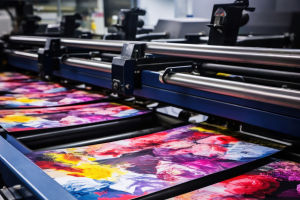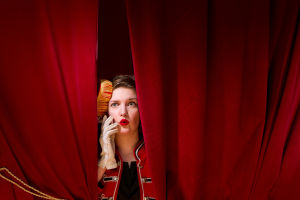Dance, in its purest form, is a powerful medium of self-expression. Whether it's the fluidity of ballet, the rhythmic moves of hip-hop, or the structured steps of contemporary dance, each form of movement conveys emotions and stories without the need for words.
We all know that body language plays a key role in communication, but in dance, it takes center stage. In this article, we explore how dance, through its physicality, can capture and convey the complexities of our inner emotional landscape.
The Emotional Language of Movement
We often think of emotions as intangible, fleeting experiences—something difficult to express with mere words. But dance offers a language that bypasses this limitation. Every gesture, every step, every shift in posture can communicate deep emotions. A leap can express joy or liberation; a slow, controlled movement can evoke sorrow or contemplation.
The power of dance lies in its ability to translate feelings that are often too complex for verbal articulation into physical actions that can be universally understood. Through the way our bodies move, we tell stories that words cannot always capture.
Body Movements and Emotional Depth
When we dance, we not only use our muscles, but we also engage our emotions. The connection between the two is crucial in conveying authenticity in dance. A dancer who is emotionally invested in the movement can translate feelings of love, grief, anger, or excitement through the smallest of gestures.
For example, the way a dancer's arms stretch out during a performance can symbolize a desire for connection, or the tightening of their body can represent frustration. These movements give emotional depth and nuance, transforming the dance from a mere physical activity into a profound form of artistic expression.
The Role of Space and Timing
In dance, how we use space and timing also plays a significant role in emotional expression. The distance between dancers or the space they occupy on stage can evoke feelings of isolation or closeness. For instance, dancers moving in sync can create a sense of unity, while distancing between them may symbolize separation or conflict.
The timing of movements also holds power: a sudden, sharp gesture can represent a burst of anger, while a slow, elongated movement may suggest sorrow or reflection. Dance, therefore, is not just about the choreography, but about how time and space are manipulated to create emotional resonance.
From Classical to Modern Dance: An Evolving Expression
Historically, the way dance has been used to express emotions has evolved. Classical forms like ballet tend to focus on precision and grace, often exploring themes of love, tragedy, or beauty. The dancer's ability to maintain composure while delivering deeply emotional performances speaks volumes about their inner emotional state.
In contrast, modern dance embraces more abstract and personal expressions, often breaking away from traditional forms to create raw, unfiltered emotions. Contemporary dancers may use unconventional movements to explore the messiness of human emotion—where feelings are not always neatly packaged, but instead are chaotic, messy, and ever-changing.
Connecting with the Audience: Emotional Impact
For us as viewers, the emotional power of dance comes not only from the movement itself but also from the connection we feel with the performer. When a dancer is able to communicate their emotions authentically through their movements, we can't help but connect with them. We see their vulnerability and strength, and it resonates with our own experiences. This connection is what makes dance such a moving and universally appreciated art form.
Whether we're watching a performance in a theater or viewing a dance video online, we can feel the emotions of the dancer through their body language, creating an intimate and shared experience between performer and audience.
Conclusion: Dance as a Reflection of Our Inner World
In the end, dance is more than just a physical activity—it is a window into the human soul. Through movement, we are able to express our deepest emotions, fears, desires, and triumphs. As we dance, we communicate more than what we can say with words; we tell stories that are felt, not heard.
So the next time you watch a dance performance, pay attention to the emotions behind each step, each gesture, and each pause. Dance, in its many forms, continues to be one of the most powerful and universal ways of expressing the inner workings of the heart and mind.
We hope this exploration of dance as a form of emotional expression has inspired you to think about how you, too, can use movement to communicate your inner world. What emotions do you think dance can best express?


